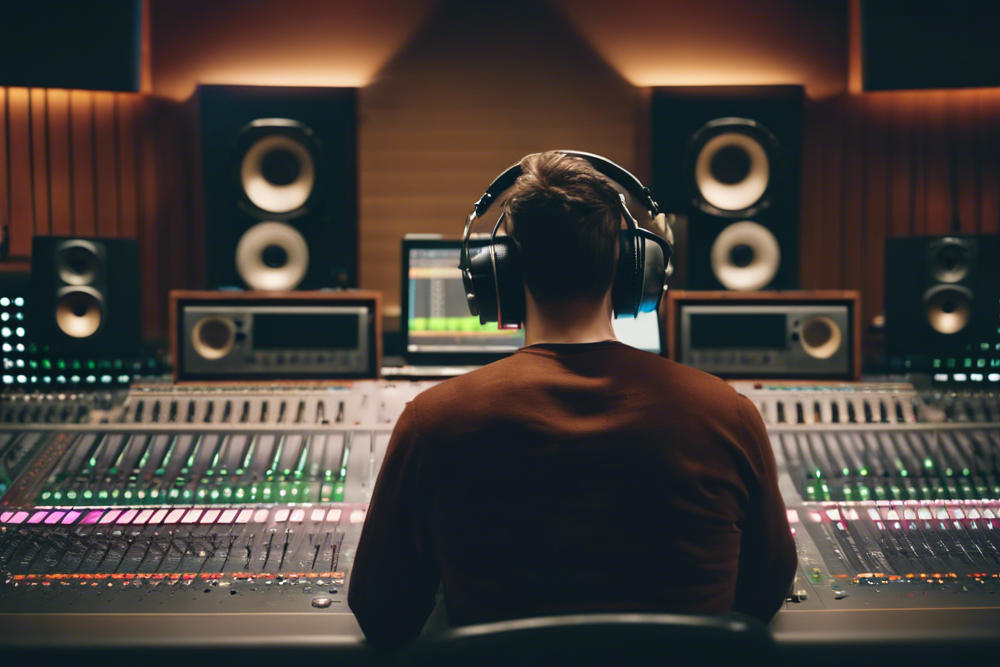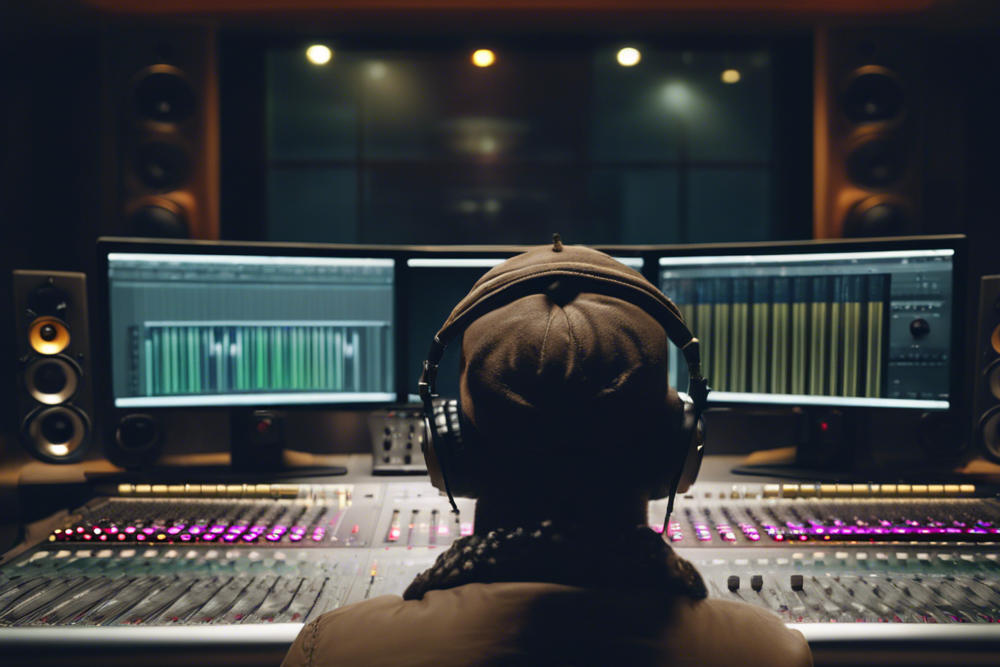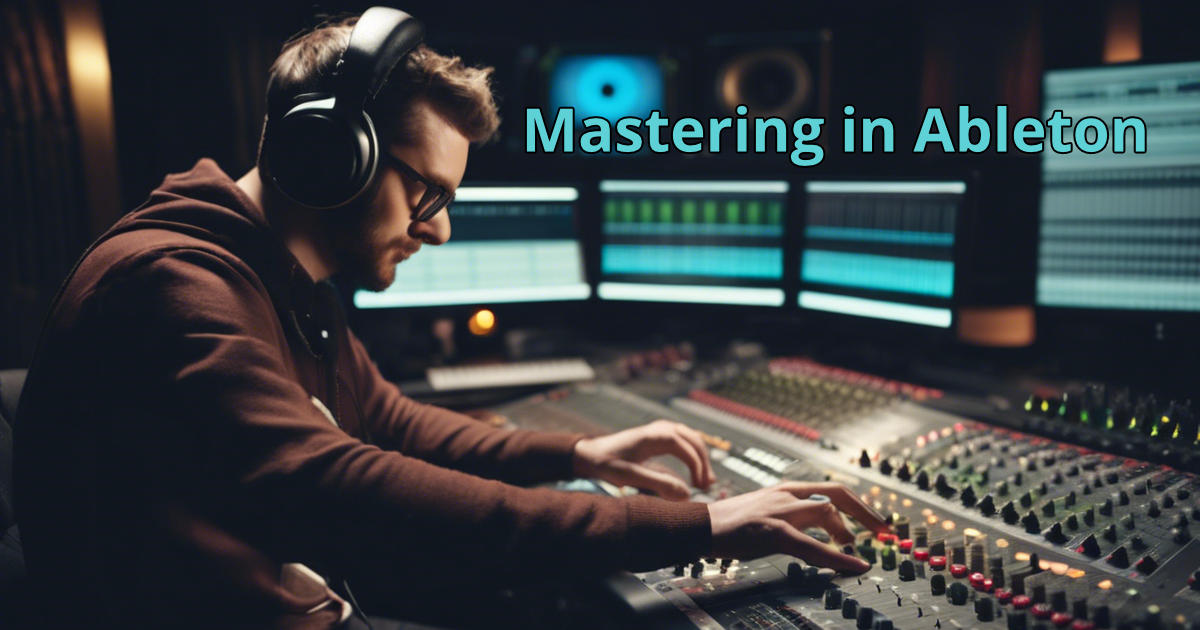Welcome to the realm of mastering in Ableton Live, where musical magic meets technical finesse. Discover the art of transforming raw mixes into professional-grade tracks with precision and creativity. Let’s embark on a journey to unlock your mastering potential.
Table of contents
Understanding Mastering in Ableton Live
Mastering is the final step in the music production process, turning a mix into a polished, cohesive track ready for distribution. Ableton Live, a popular choice among sound engineers and music producers, offers a comprehensive set of tools that can enhance your mastering skills. By manipulating volume levels, EQ settings, and compression, Ableton Live ensures your audio tracks resonate with clarity and depth.
Setting Up for Success: Initial Steps
Before diving into the mastering process in Ableton, ensure your project is organized. Label each individual track clearly and group similar instrument tracks together. This preparatory step helps in managing the mix and applying effects more cohesively during the mastering phase.
| Steps | Description |
|---|---|
| Organize Project | Label tracks clearly and group similar instruments for efficient management. |
| Balance Volume | Adjust gain levels to ensure each track complements others without overpowering. |
| Prepare Mix | Ensure no frequency clashes and a harmonious blend of all elements. |
| Check Cohesion | Verify overall cohesion and readiness for the mastering phase. |
Balancing Volume Levels Across Tracks
A common challenge in mastering is achieving a balanced sound across all tracks. Start by adjusting gain levels to ensure no track overpowers another. This involves careful listening and minor adjustments to create a harmonious blend where each element complements the others without any frequency clashes.
| Steps | Description |
|---|---|
| Adjust Gain Levels | Ensure no track overpowers another by fine-tuning volume levels. |
| Listen Carefully | Use attentive listening to achieve a balanced and harmonious mix. |
| Minor Adjustments | Make minor adjustments to achieve a cohesive blend of all elements. |
| Prevent Clipping | Watch for clipping and ensure a smooth transition between tracks. |
Utilizing Multiband Dynamics for a Cleaner Mix
Multiband dynamics are essential in mastering, allowing you to compress different frequency ranges individually. This precision helps maintain the dynamic range while controlling the loudness. Ableton’s Multiband Dynamics effect is a powerful tool for smoothing out a mix and making it sound more uniform.
Using Ableton’s Multiband Compressor:
- Divide the frequency spectrum: Aim to isolate the lows, mids, and highs.
- Adjust thresholds and ratios: Fine-tune these settings to achieve the desired sound.
- Monitor the output: Use Ableton’s built-in meters to watch for any peaking or unwanted reductions.

Reference Tracks: Your Guide to a Professional Sound
Using reference tracks is critical in mastering. Select a few tracks that represent the sound you’re aiming for and use them as a benchmark throughout the mastering process. This practice helps in matching the professional sound quality and ensures consistency in your music productions.
| Steps | Description |
|---|---|
| Select Tracks | Choose professionally mixed and mastered songs representing desired sound. |
| Benchmark Comparison | Use reference tracks to gauge your mix’s clarity, balance, and sonic quality. |
| Analyze Differences | Identify areas where your mix deviates from reference tracks for adjustment. |
| Consistency Check | Ensure consistency in tonal balance, dynamics, and overall sonic quality. |
Configuring Output Levels for Optimal Mastering
The master track in Ableton is where you’ll apply final touches. Ensure the sample rate and bit depth are set properly (44.1 kHz and 16 bits are standard for CD quality). Monitor the track’s output levels to avoid clipping and ensure the mix’s loudness is consistent with industry standards.
| Steps | Description |
|---|---|
| Set Sample Rate | Ensure proper sample rate (44.1 kHz) for CD quality audio. |
| Adjust Bit Depth | Use standard bit depth (16 bits) for optimal audio resolution. |
| Monitor Output Levels | Prevent clipping by monitoring output levels and adjusting accordingly. |
| Maintain Consistency | Ensure mix loudness aligns with industry standards for distribution. |
The Importance of Sample Rate and Dynamic Range
Understanding the technical aspects, such as sample rate and dynamic range, is crucial. A higher sample rate preserves more details but requires more processing power and storage. Dynamic range, the contrast between the quietest and loudest parts of a track, is vital for emotional impact and should be preserved as much as possible.
| Concepts | Description |
|---|---|
| Sample Rate | Higher sample rates preserve more detail but require more processing power. |
| Dynamic Range | Vital for emotional impact, preserving contrast between quietest and loudest parts. |
| Storage Concerns | Higher sample rates increase file size, necessitating more storage space. |
| Processing Power | Higher sample rates demand more CPU power for real-time processing. |

Advanced Techniques: Using Third-Party Plugins
While Ableton comes equipped with robust plugins, sometimes third-party plugins can offer that extra finesse. Plugins such as multiband compressors and glue compressors can enhance individual elements and glue the track together for a cohesive sound.
Popular Third-Party Plugins:
- FabFilter Pro-Q 3 for advanced EQ.
- Izotope Ozone for comprehensive mastering suites.
- Waves SSL Compressor for classic analog compression.
Finalizing Your Master: Best Practices
In the final stages of mastering, double-check all elements:
- Revisit each track: Ensure each one sits well in the mix.
- A/B testing: Frequently compare your master with your reference tracks.
- Seek feedback: Have other producers or audio engineers take a listen for a fresh perspective.
Mastering In 5 Steps – Ableton Live Devices Only (Free Preset) – Video
Summary and Encouragement
Mastering in Ableton Live brings out the full potential of your musical ideas, transforming them into tracks that stand out. By following these steps and consistently applying best practices, your skills will mature, and your tracks will begin to sound professional. Continue to experiment, learn, and refine your approach to mastering in Ableton. Your next master could well be your best.
Conclusion
In conclusion, mastering in Ableton Live is a dynamic journey that transforms musical creations into professional-grade tracks. By following these steps and embracing experimentation, your mastering skills will evolve, leading to captivating and polished productions. Remember, mastering is not just a technical process but an art form that thrives on creativity and dedication. Keep refining your craft, and your next masterpiece could be just a beat away.
Related Posts
- What is Mastering? The Final Touch in Music Production
- Ableton Tutorial: Getting Started with Ableton
- Best Ableton Controller For Your Music Production Needs
- Ableton Vocoder: Unlock the Creative Power of Ableton Live’s Vocoder
- How to Remix a Song? A Simple Guide
- How to Start Making Music? A Beginner’s Guide
- What Does a Recording Engineer Do? Behind the Soundboard
- The Beginner’s Guide on How to EQ Vocals for Stellar Sound
FAQs
Mastering is the final step in music production, enhancing the overall sound quality and ensuring consistency across tracks. It involves optimizing levels, dynamics, and tonal balance for a polished and professional finish, making your music ready for distribution and playback across various platforms.
Ensure your mix is well-balanced, with no clipping or excessive peaks. Each track should sit well in the mix, and there should be no frequency clashes. Additionally, listen for overall cohesion and clarity. Once these criteria are met, your mix is ready for the mastering phase.
Reference tracks are professionally mixed and mastered songs used as a benchmark for comparison during mastering. By referencing these tracks, you can ensure your mix achieves a similar level of clarity, balance, and overall sonic quality, guiding you towards a professional sound.
While Ableton Live offers powerful built-in tools for mastering, third-party plugins can provide additional versatility and sonic enhancement. Plugins like FabFilter Pro-Q 3, Izotope Ozone, and Waves SSL Compressor offer advanced features and unique sonic characteristics that can complement Ableton’s native effects.
Pay attention to technical specifications such as sample rate and bit depth, typically set to 44.1 kHz and 16 bits for CD-quality audio. Monitor output levels to avoid clipping, and frequently compare your master with reference tracks to ensure it meets industry norms for clarity, dynamics, and overall loudness.
